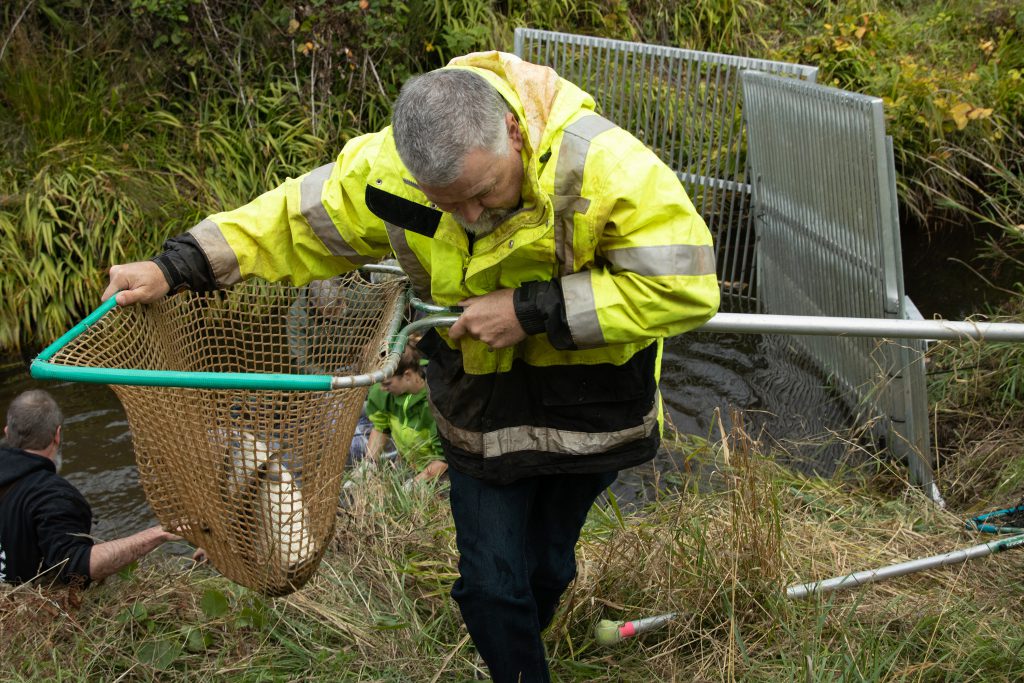
2022 brings a bountiful fall run
Salmon spawning total means positive future (KCBY, Nov. 28, 2022)
Salmon fighting back from the brink (Coos Bay World, Nov. 28, 2022)
Bandon Western World, Oct. 22, 2022
Coquille Indian Tribe members have their first subsistence hunting opportunities in five southwest Oregon counties under a new state agreement.
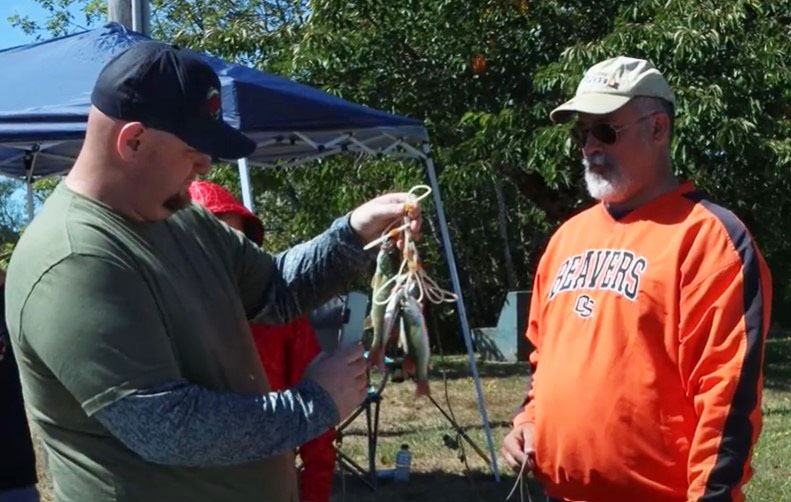
More than 1,500 predatory bass were removed from the Coquille River during Labor Day Weekend. But two elusive fish worth $1,000 are still waiting to be caught.
The Coos Bay World, Sept. 12, 2022
The Coquille Indian Tribe donated $1,000 to lure participants for a smallmouth bass derby. It’s part of an effort to reduce invasive predators that gobble baby salmon.
Oregon Sen. Jeff Merkley and Ron Wyden have secured funding for the 2023 Senate Appropriations bills for essential community projects.
Pending a agreement with the House, the bill would provide $750,000 for Coquille River salmon conservation.
A grant-funded electrofishing boat will help combat invasive bass in the Coquille River.
Tribal chair and ODFW director sign agreement (ODFW video)
Oregon tribe, state leaders enter historic agreement (Indian Country Today/Underscore News)
Historic partnership between Coquille Indian Tribe and ODFW (Roseburg News-Review)
Coquille Tribe co-manages fish and wildlife with state of Oregon (OPB)
Tribe signs landmark agreement with state (The Other Oregon)
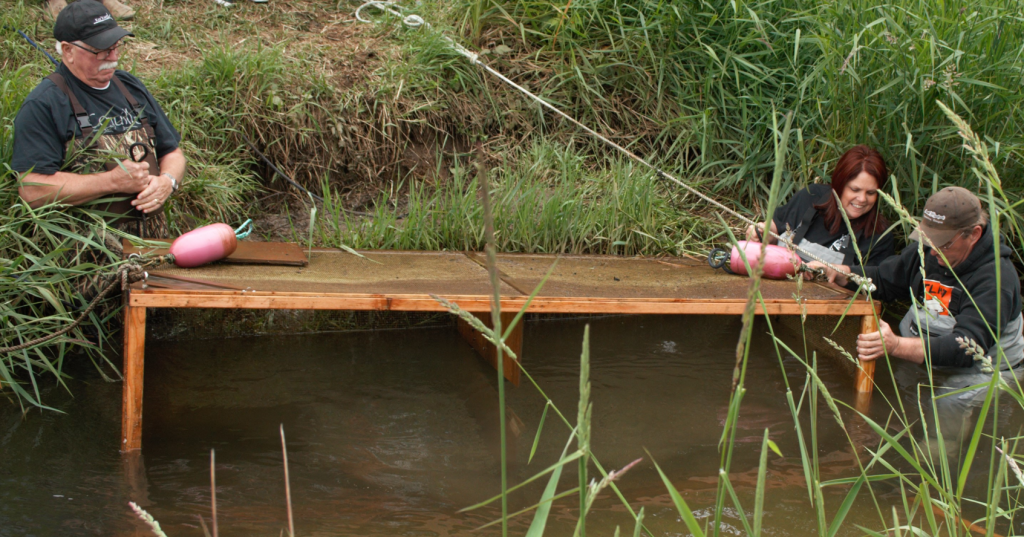
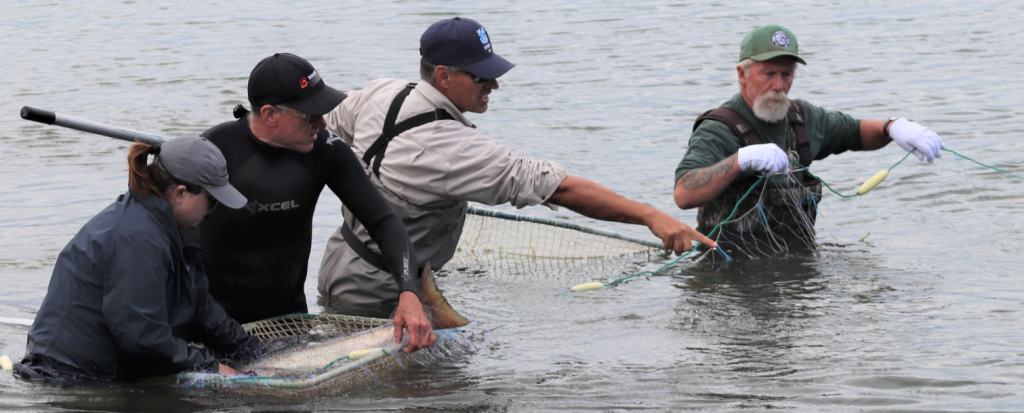
BANDON, Ore. – “Buck.”
“Buck.”
“Jack.”
“Buck.”
Tuesdays are spawning days at the Bandon Hatchery, and Manager David Welch is sorting salmon. Waist-deep in a holding pond, he catches fish in a net, glances at each one, and tosses it into a pen.
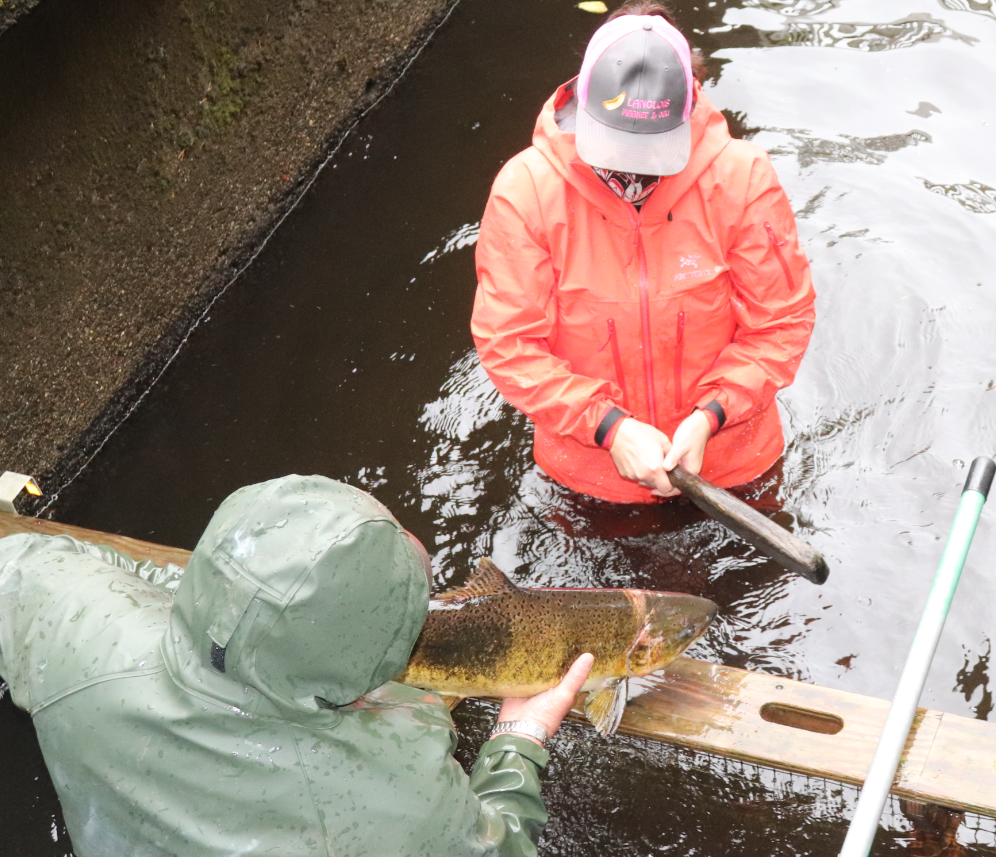
Adult male “bucks” go into one pen. “Jacks” – overeager male adolescents that swam home a year early – go in another. “Green” females, still a few weeks premature for spawning, land in yet another.
When Welch finds a fully mature, spawning-ready female, he holds her up for helper Kassandra Rippee. Armed with a wooden club, Rippee steels herself for her task.
This is the chilly, wet, sometimes bloody business of saving the Coquille River’s fall Chinook salmon. Two months ago, the Coquille Indian Tribal Council declared an emergency, pledging the tribe’s resources to save the alarmingly depleted fishery.
Rippee is the tribe’s archaeologist and historic preservation officer. On this day, however, she and two other tribal employees are fish wranglers, partnering with the Oregon Department of Fish and Wildlife’s hatchery team.
Tribal employees, tribal members and other volunteers were busy throughout October, mostly gathering fish for the hatchery. Sometimes they stretched nets across creek channels. Other times they waded upstream, herding fish ahead of them – and away from the threat of hungry seals.
The tribe’s project, led by tribal biologist Helena Linnell, is showing promise. At the end of October, 81 salmon had arrived at the hatchery. That’s a long way from the goal of 70 breeding pairs, but it far exceeds 2020’s total of just 16 fish. And the season is not yet finished.
Another bright spot: The presence of 13 jacks suggests a stronger run in 2022, when those jacks’ brothers and sisters will show up as adults.
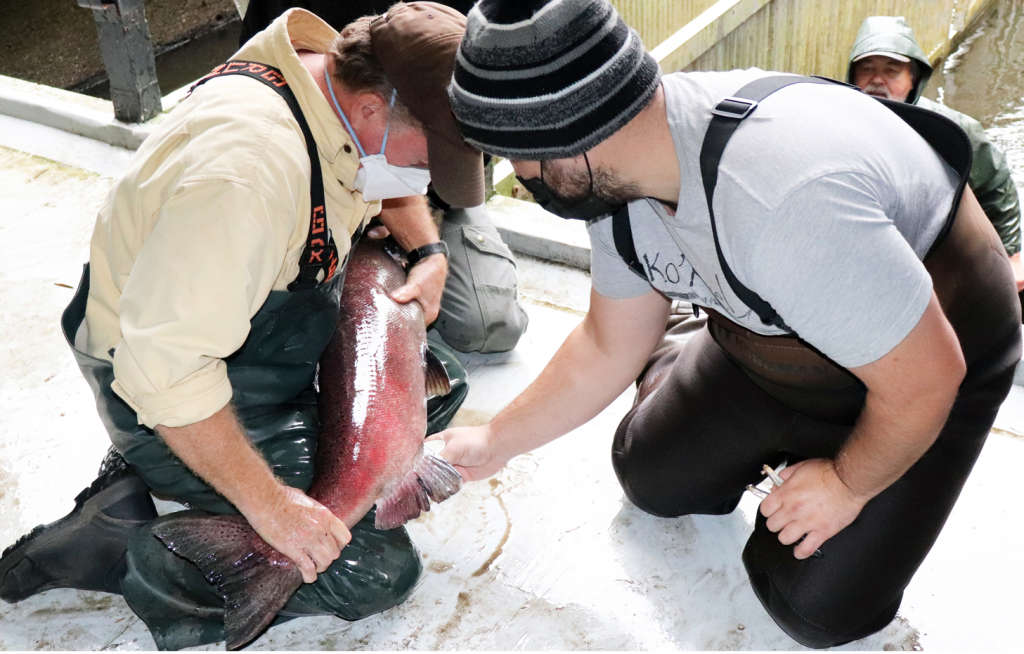
At the hatchery, Welch leads the crew through a time-honored procedure. Three female salmon are ready for spawning today. So Rod Knoebel, an ODFW senior technician, squeezes sperm from three adult males. Todd Martin, a tribal spouse who works with Rippee in historical preservation, catches the liquid in separate paper cups.
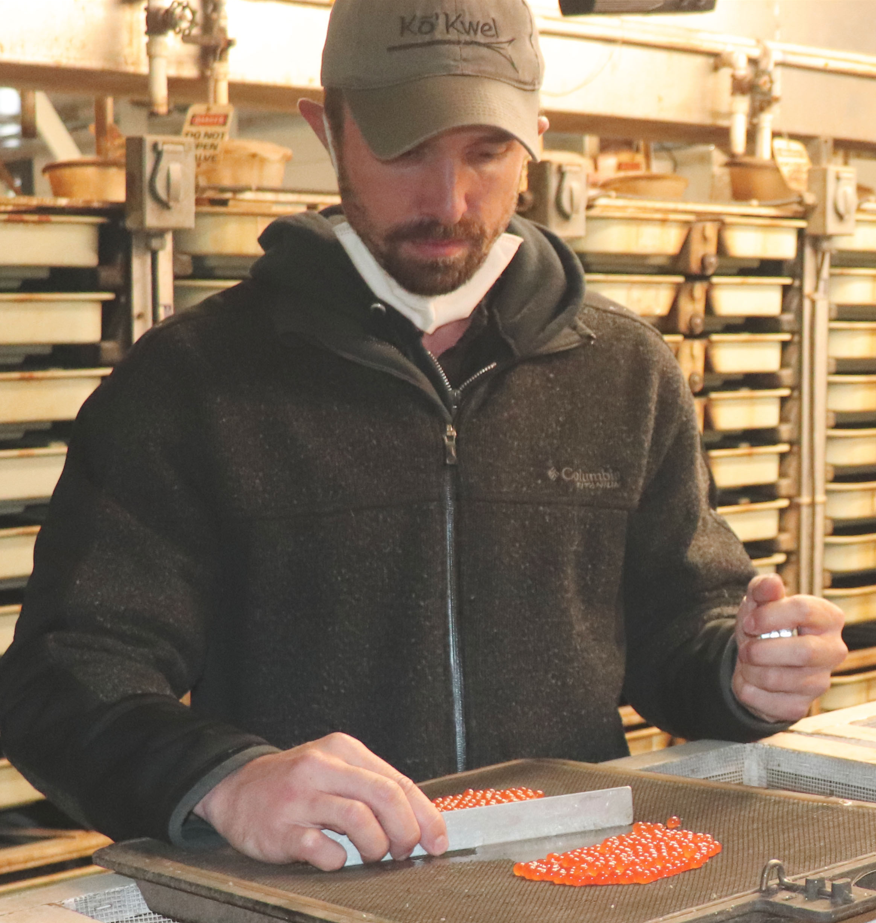
Next, Welch and Knoebel harvest eggs from the three lifeless females – typically between 2,000 and 5,000 per fish. Each batch is separated into three plastic dishes, to be fertilized with sperm from all three males. This process, Welch explains, creates nine parent groups, maximizing the new salmon generation’s genetic diversity.
Whether in the wild or in a hatchery, spawning is the final act of a salmon’s life. After collecting tissue samples for laboratory testing, Welch will return the carcasses to the river, to decompose and nourish new life.
The hatchery normally has three employees, but one position is temporarily vacant. So the tribe’s collaboration is particularly welcome.
“I don’t know where we’d be without that,” Welch says.
Tribal employees are clearly passionate about the work. Biologist Linnell and technician Kristopher Murphy have worked long hours throughout October. Murphy, a tribal member, estimates 10-15 hours a day, with rarely a day off. But no complaints.
“I’m all for it,” he says. “I want to help as much as I can.”
Linnell, a 15-year veteran of fisheries work, agrees: “This is a labor of love and one I am very passionate about. I will work as hard as I can, so we can once again harvest fall Chinook and see more of them back on the spawning grounds.”
Fish wrangling will continue through November. Prospective volunteers should email [email protected].
Tribal staff member Todd Martin, right, works with ODFW’s Rod Knoebel to collect sperm from a male salmon. The salmon’s red color indicates its readiness for spawning. Behind him, Hatchery Manager David Welch watches from a holding pond.
With clicker in hand, tribal member Kristopher Murphy counts salmon eggs at the Bandon Hatchery.